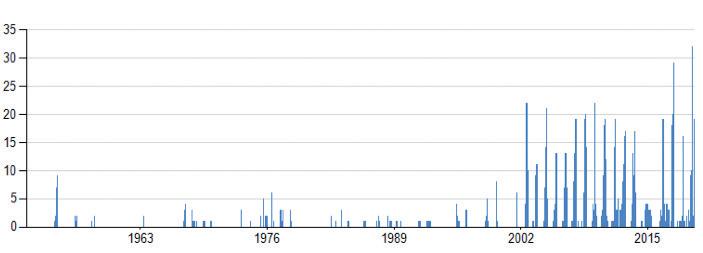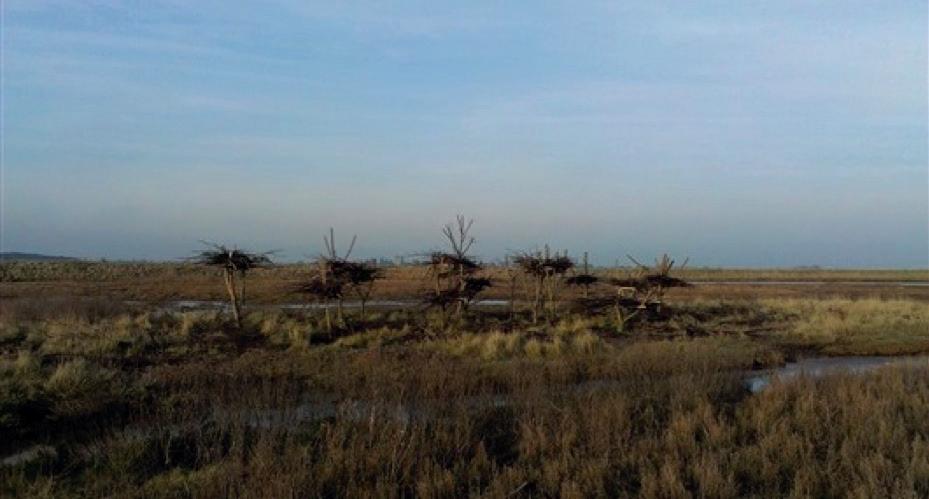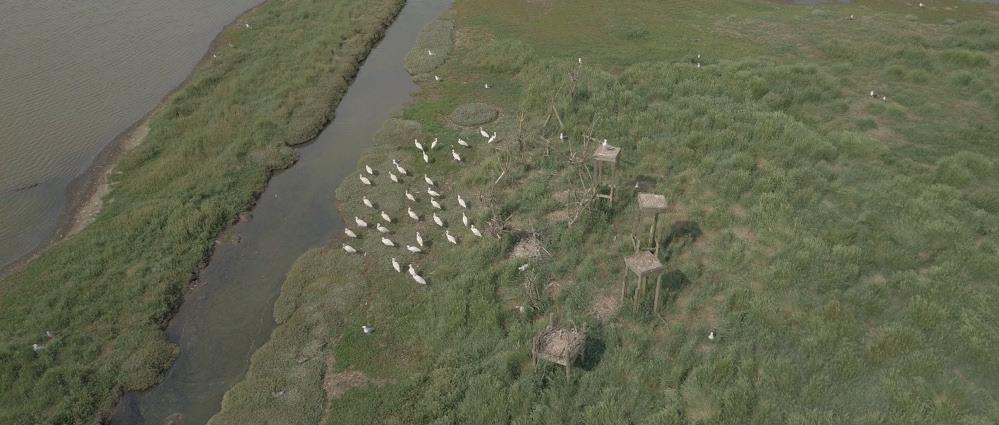
6 minute read
Spoonbills on Havergate Island: Aaron Howe, David Fairhurst, Lyndsey Record
Lyndsey Record and David Fairhurst, South Suffolk Coast RSPB Wardens and Aaron Howe, South Suffolk RSPB Coast Site Manager
Havergate Island is located on the Suffolk Coast nestled within the Alde/Ore Estuary near Orford. It is Suffolk’s only island and comprises 100ha of predominantly-saline lagoons and shingle habitats. The RSPB purchased the reserve in 1949 following war-time neglect and colonisation by Avocet Recurvirostra avosetta. The reserve, along with Minsmere, was instrumental in the successful re-establishment of Avocets in the UK.
Eurasian Spoonbill Platalea leucorodia have been recorded on Havergate Island since the RSPB first purchased the reserve in 1949. The first record we have is from 1951 with infrequent records through to the late-1990s. From 2002 numbers rose sharply which was no doubt associated with the increased breeding success in the Wadden Sea on the north coast of The Netherlands.
Recorded Spoonbill sightings on Havergate Island
Spoonbill numbers rose year-on-year although most of the birds were non-breeding with juvenile birds arriving in late July to spend the summer feeding and roosting on the island. No nesting attempts were observed but the wardens were hopeful that the island could provide conditions for successful breeding attempts. Model decoy birds were built in 2007 and small nests were constructed on the ground. The team put the decoys out annually and the artificial platforms were deliberately very small. In 2013 surveys were carried out to see if the food supply was adequate. After determining that food was not an issue, attention turned to possible ground predators. As the island is so close to the mainland it can have intermittent visits by ground predators such as Red Fox Vulpes vulpes, Eurasian Badger Meles meles and Eurasian Otter Lutra lutra. To combat this, in February 2013 additional artificial elevated Spoonbill platforms were erected in the hopes that nesting areas off the ground would be more enticing.

Spoonbill platforms erected in 2013
2019 breeding season
For the first recorded time, 2019 witnessed Spoonbills breeding on Havergate Island. Five pairs nested, eggs hatching in three of them, one of the nests hatched four chicks, but ultimately all were predated. From the first year that the platforms were erected we started seeing Spoonbills on them displaying breeding behaviour such as passing sticks to each other, mutual preening and copulating as well as sleeping on them. This was the case until 2019 when something finally happened! After years of watching the Spoonbills using the artificial nests for displaying and roosting, we finally witnessed a pair, on March 19th, defending territory around the artificial nest, chasing away gulls and being aggressive towards each other. After observing the birds closely, on April 21st we concluded that they were sitting on eggs. The nest was on the ground under the artificial platforms (using material from the platforms and one that had fallen). However, on April 25th the nest site was abandoned for reasons unknown. A number of birds remained on the island (slowly increasing) but no further breeding activity was recorded until June 5th when two (probably a new pair) were seen mating in the same area as the previous nest. On June 9th we had six adult Spoonbills in full breeding plumage and six immatures on the island all around the original nest site. Over the next week we observed a pair on the original nest site and another two pairs that were favouring certain spots close by. As the nest site is a fair distance from the hide it was very hard to see clearly what was going on. However, photos taken with the drone helped to id probable pairs and nests. On June 20th, drone photos confirmed that we had three pairs sitting on nests, all with eggs. On July 3rd a drone flight showed five birds sitting/incubating including the three we originally knew about, with another two nearby. We had 23 birds present on site.
Havergate’s first chicks
The first chicks were seen on July 6th being fed by the parents on the original nest. It was very hard to see what was happening on the other nests because of the vegetation. On July 14th we confirmed four chicks in the first nest.
From July 15th onwards, no normal feeding activity could be seen on the nests, although Spoonbills could still be seen. On July 16th we decided to put the drone up to see what was happening. Unfortunately, it looked like all the nests had been predated and then abandoned.

Drone photo taken July 6th showing sitting birds all on the ground.

Drone pic July 16th. 33 birds present. Dead chicks visible in some nest
We decided to walk out and inspect the failed nests where we found fresh Badger prints in the lagoon mud and up to the nests. We found the dead chicks in the nests, some partly-eaten. We confirmed that three of the nests had chicks in them. The Spoonbills continued to reside on the island and we had our peak count of 34 Spoonbills on July 18th, the highest total ever recorded in Suffolk (D Fairhurst, A Howe, L Record). Numbers then slowly started to decrease.
Looking forward - the year has shown us how vulnerable the colony is and how easily predators can get across to the island. Considering this year’s successes and failures, it was decided to dig out the 350m ditch surrounding the nesting area and install a partially-submerged predator fence. When the water levels are raised there will only be approximately 45cm visible above water. We hope that this will prevent any predators from swimming onto the island in the future.

Newly installed predator fence (the water level is currently low to make the fence installation easier. It will be raised in 2020 ahead of the breeding season)
Let’s hope that they return and nest successfully in 2020.
Historical addendum
The exact year when Spoonbills last hatched young in Suffolk is unknown. Ticehurst writing in his avifauna entitled “A History of the Birds of Suffolk” (1932) quoted Sir Thomas Bourne who indicated that Spoonbills were breeding at Trimley beside the Orwell Estuary in 1668. However, there is nothing to indicate when and why they ceased to breed at Trimley. This colony was unknown to an author called Pennant writing in the journal “British Zoology” in 1776. As such, there is the possibility that Spoonbills were still breeding at Trimley into the early years of the 18th century. So, it seems likely that the Havergate chicks were the first to hatch in Suffolk for 300-350 years.
The nearest that Spoonbills had got to hatching out young in Suffolk prior to the events of 2019 is detailed by Steve Piotrowski in his avifauna “The Birds of Suffolk” (2003). At a coastal site, seven birds built three nests in 1997; one egg was laid but this was predated. At the same site in 1998, five pairs were present and at least three nests were built; apparent incubation took place between early June and mid-August and although it was suspected that hatching occurred, there was no evidence that any chicks fledged. The same site was occupied again in 2002 when up to 19 birds tended ten nests but no fledging was recorded.
A colony became established in north Norfolk on the Holkham NNR in 2010 when six pairs raised ten young. By 2018, this colony, the largest in the UK, had increased to 28 pairs which raised 48 young.
Philip Murphy







